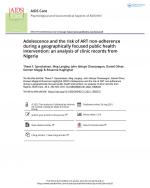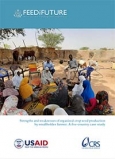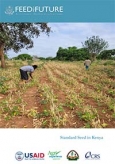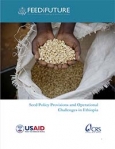Journal article | December 16, 2022
Adolescence and the risk of ART non-adherence during a geographically focusedpublic health intervention
The risk of poor antiretroviral therapy (ART) adherence among adolescents is a challenge to controlling HIV. This study aims to provide guidance for geographically focused public health interventions to improve adherence. Through clinic records, it investigates adolescents’ non-adherence risk and clinic-level differences in regions of Nigeria which were part of PEPFAR’s geographical pivot. Records (n = 26,365) were selected using systematic random sampling from all PEPFAR-supported facilities (n = 175) in targeted Local Government Areas across three regions in Nigeria. Adolescents’ risk of non-adherence was estimated using region-specific random-effects models accounting for clinic-level variation. These were adjusted for sex, whether a patient had to travel to a different region, clinic location (urban/rural), clinic type (primary, secondary, tertiary). Despite regional variations, adolescents were at higher risk of non-adherence compared to adults. A similar, but weaker, association was found for children. Patients attending tertiary facilities for ART in the South-South region exhibited very high risk of non-adherence. Adolescents and children are at an increased risk of poor ART adherence in rural regions of Nigeria. Regional differences and facility type are critical factors. Future public health programs focused on the risk of poor adherence targeting “high-prevalence areas” should be sensitive to contextual differences and age-appropriate care.





